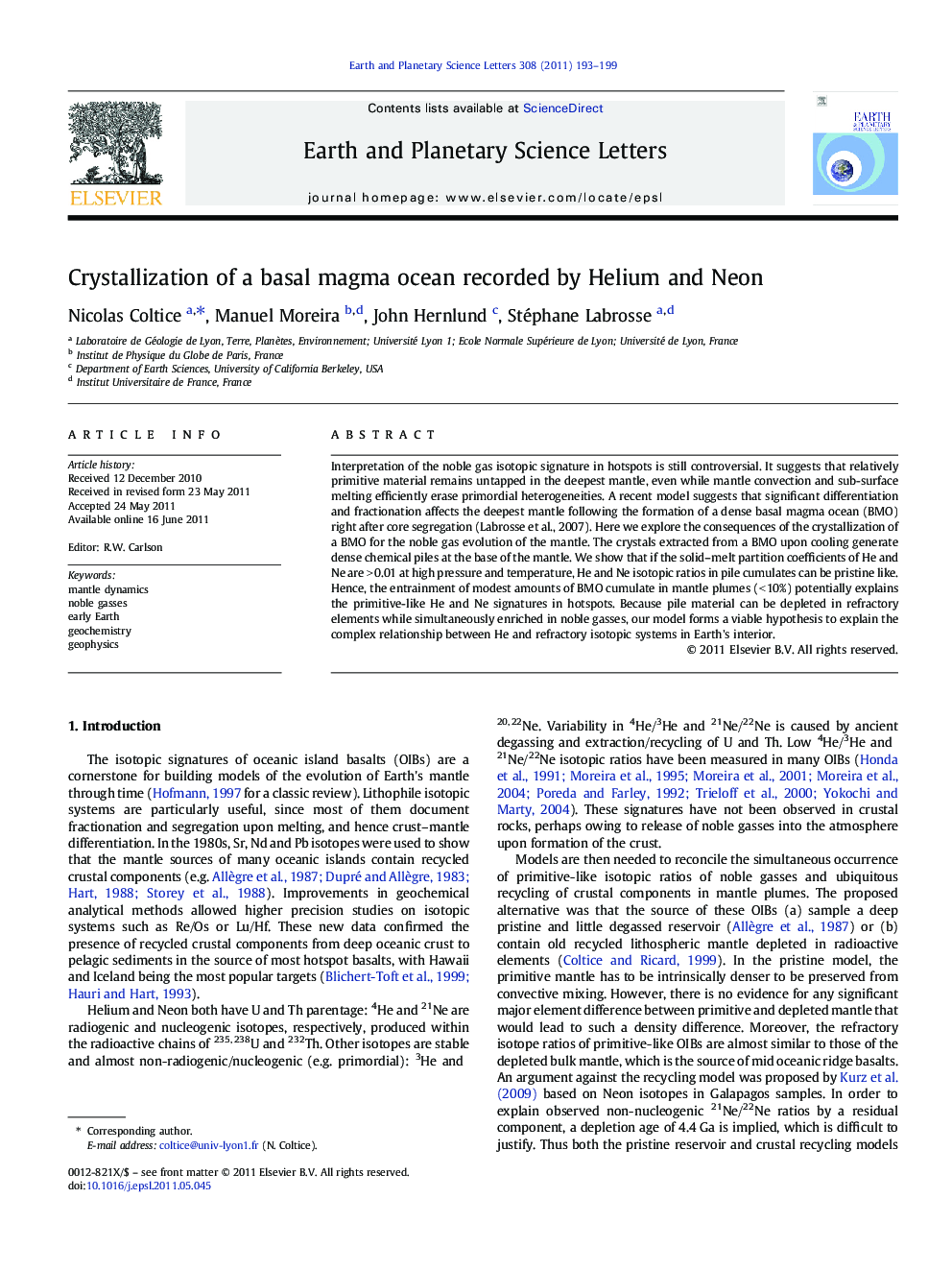| Article ID | Journal | Published Year | Pages | File Type |
|---|---|---|---|---|
| 4678047 | Earth and Planetary Science Letters | 2011 | 7 Pages |
Interpretation of the noble gas isotopic signature in hotspots is still controversial. It suggests that relatively primitive material remains untapped in the deepest mantle, even while mantle convection and sub-surface melting efficiently erase primordial heterogeneities. A recent model suggests that significant differentiation and fractionation affects the deepest mantle following the formation of a dense basal magma ocean (BMO) right after core segregation (Labrosse et al., 2007). Here we explore the consequences of the crystallization of a BMO for the noble gas evolution of the mantle. The crystals extracted from a BMO upon cooling generate dense chemical piles at the base of the mantle. We show that if the solid–melt partition coefficients of He and Ne are > 0.01 at high pressure and temperature, He and Ne isotopic ratios in pile cumulates can be pristine like. Hence, the entrainment of modest amounts of BMO cumulate in mantle plumes (< 10%) potentially explains the primitive-like He and Ne signatures in hotspots. Because pile material can be depleted in refractory elements while simultaneously enriched in noble gasses, our model forms a viable hypothesis to explain the complex relationship between He and refractory isotopic systems in Earth's interior.
Research highlights► We propose a model for the origin of primitive-like isotopic ratios in mantle plumes. ► We compute the evolution of noble gases for the crystallizing basal magma ocean (BMO). ► Cumulates from the BMO have primitive-like He and Ne ratios. ► Cumulate entrainment impacts the noble gases but not refractory elements. ► Our results depend on high pressure partitioning of He and Ne and refractory elements.
